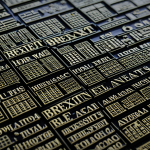Understanding the Problem of Creaky Wooden Floors
Creaky floors are a common characteristic of vintage Victorian homes, often due to the unique craftsmanship and building materials of the era. The historical single-slab construction and aged timber contribute to this charming, albeit noisy problem. But why do these noises occur in the first place?
The creaking is typically the result of wooden floorboards rubbing against each other or the joists beneath. As the home ages, there may also be slight settling, causing misalignment and further noise. Temperature fluctuations and humidity can cause the wood to expand and contract, exacerbating the issue.
Also to see : Stylish Modular Furniture for Every Changing Family: Adapt with Ease and Elegance!
Addressing creaky floors is not just about comfort; it’s essential for preserving the integrity of your Victorian home. Ignoring such noise can lead to more significant structural problems over time. Additionally, the distinct aesthetics of vintage houses mean any repair should be mindful of maintaining their historical charm. By understanding these common factors and the importance of addressing them, homeowners can take proactive steps to ensure their beloved wooden treasures remain both delightful to the eyes and silent to the feet.
Essential Tools and Materials
Embarking on a DIY flooring repair project requires an arsenal of both tools and materials to ensure the job is done effectively. Whether you’re a seasoned handyman or venturing into repairs for the first time, having the right gear is crucial.
In parallel : Designing a Warm and Safe Fireplace Haven: Top Expert Tips for Your Family Home
DIY Flooring Tools
You’ll need a few basic tools for tackling creaky floors. A hammer, drill, and screwdriver form the foundation. A pry bar is essential for gently lifting floorboards without causing damage. Add to this a stud finder for locating joists and a carpenter’s square to ensure precision.
Recommended Materials
For effective noise reduction, some materials are indispensable. Talcum powder, WD-40, and paraffin wax can work wonders when dealing with wooden floor noise. Additionally, utilising floor screws, shims, and wood adhesive ensures stability and secure fitting.
Safety Gear and Precautions
Safety should never be overlooked. Always equip yourself with safety goggles and gloves to prevent any accidents. Ensure the workspace is well-lit and ventilated, allowing for maximum focus and safety. By assembling the right tools, materials, and gear, you’ll be well-prepared to tackle any Victorian home issue head-on.
Step-by-Step DIY Hacks
Embarking on DIY fixes for creaky floor fixes can transform your living space from routinely noisy to soothingly silent. This section provides practical DIY solutions and floor repair techniques tailor-made for tackling Victorian home challenges.
Lubrication Techniques
A classic approach to addressing squeaky floorboards is through proper lubrication. Talcum powder can be sprinkled between the boards to eliminate friction noise. For joints and seams, a light application of WD-40 serves as an effective solution, offering immediate relief from irritating sounds. Moreover, paraffin wax provides a long-lasting fix by creating smooth surfaces that resist future noise.
Reinforcing Floor Joists
Accessing and reinforcing loose floorboards requires precision. Lift the boards gently to locate joists, using shims and screws for secure attachment. Proper placement enhances floor stability, ultimately reducing annoying creaks.
Installing Interlocking Floor Panels
For a more modern touch, consider installing interlocking panels. Choose panels complementing your home’s vintage style. Follow a methodical installation, ensuring each panel clicks into place seamlessly. These panels are instrumental in reducing ambient noise, preserving the Victorian charm without compromise.
Taking these steps means significant progress toward a creak-free environment.
Historical Context of Victorian Flooring
The Victorian era is renowned for its distinctive architectural style, and this extends to the flooring found in homes from this period. These buildings often feature wooden floors made from hardwoods like oak and mahogany, chosen for their durability and elegant appearance. Such materials were readily available during the 19th century and were paired with elaborate detailing that emphasized the craftsmanship of the time.
Victorian architecture integrated design principles that prioritized both function and aesthetic appeal. Floors were not just utilitarian; they were meticulously crafted to withstand the test of time, enhancing the home’s grandeur. This attention to detail is why these vintage homes still captivate us today.
However, the passage of time and the changing environmental conditions affect these historical flooring systems. Fluctuating temperatures and humidity levels can significantly impact wooden floorboards, resulting in creaks and other noises. Understanding the intricate history and craftsmanship behind these floors is crucial when planning maintenance or repairs. By appreciating the original design intent, homeowners can adopt strategies that ensure their floors remain both solid and visually stunning, maintaining their heritage appeal.
Maintenance Tips for Long-Term Silence
Preserving the tranquillity of your home requires regular floor maintenance. By incorporating consistent upkeep, you can effectively avert the emergence of creaky floors and sustain the charm of your vintage floors. Begin by routinely inspecting your floorboards. Regular checks are essential for identifying early signs of misalignment or damage, which tend to amplify wooden floor noise.
Incorporate cleaning practices that are gentle yet effective. Avoid soaking your floors with excessive moisture; instead, utilise a slightly damp mop and pH-neutral cleaning agents to preserve the wood’s natural beauty.
To further inhibit noise, apply maintenance oils specifically formulated for wood to keep the flooring hydrated and avoid cracks. These will help maintain a stable condition, hindering the onset of noise-inducing dryness.
When it comes to preserving vintage aesthetics, it’s crucial to avoid modern materials that might clash with your home’s original design. Opt for nature-inspired solutions that complement the era.
Finally, consider protective techniques like using breathable mats and pads under furniture to prevent scratches and distribute weight evenly, contributing to overall sound reduction. Adopting these methods will not only aid in taming the creaks but also in preserving the elegance and longevity of your treasured Victorian floors.
Visual Aids and Resources
When tackling DIY solutions for creaky floor fixes, visual aids can make a significant difference. Videos and images demonstrate complex floor repair techniques more effectively and help ensure precise execution. They can clarify steps such as using WD-40 with finesse or mastering screw placement when reinforcing joists.
For a comprehensive understanding, seek out carefully curated guides and resources. These often include a mix of DIY videos and detailed images that walk you through each phase of your repair project. Such resources are invaluable, particularly if you’re delving into Victorian home restoration for the first time, offering step-by-step instructions while highlighting key safety precautions.
In addition, consider exploring further reading on maintaining the historical integrity of your home. Understanding the legacy of vintage properties not only enriches the repair experience but also emphasises the importance of preserving architectural charm. Whether you’re a seasoned handyman or just starting, these resources can enhance your skill set and ensure your Victorian floors remain both historically authentic and blissfully quiet.





